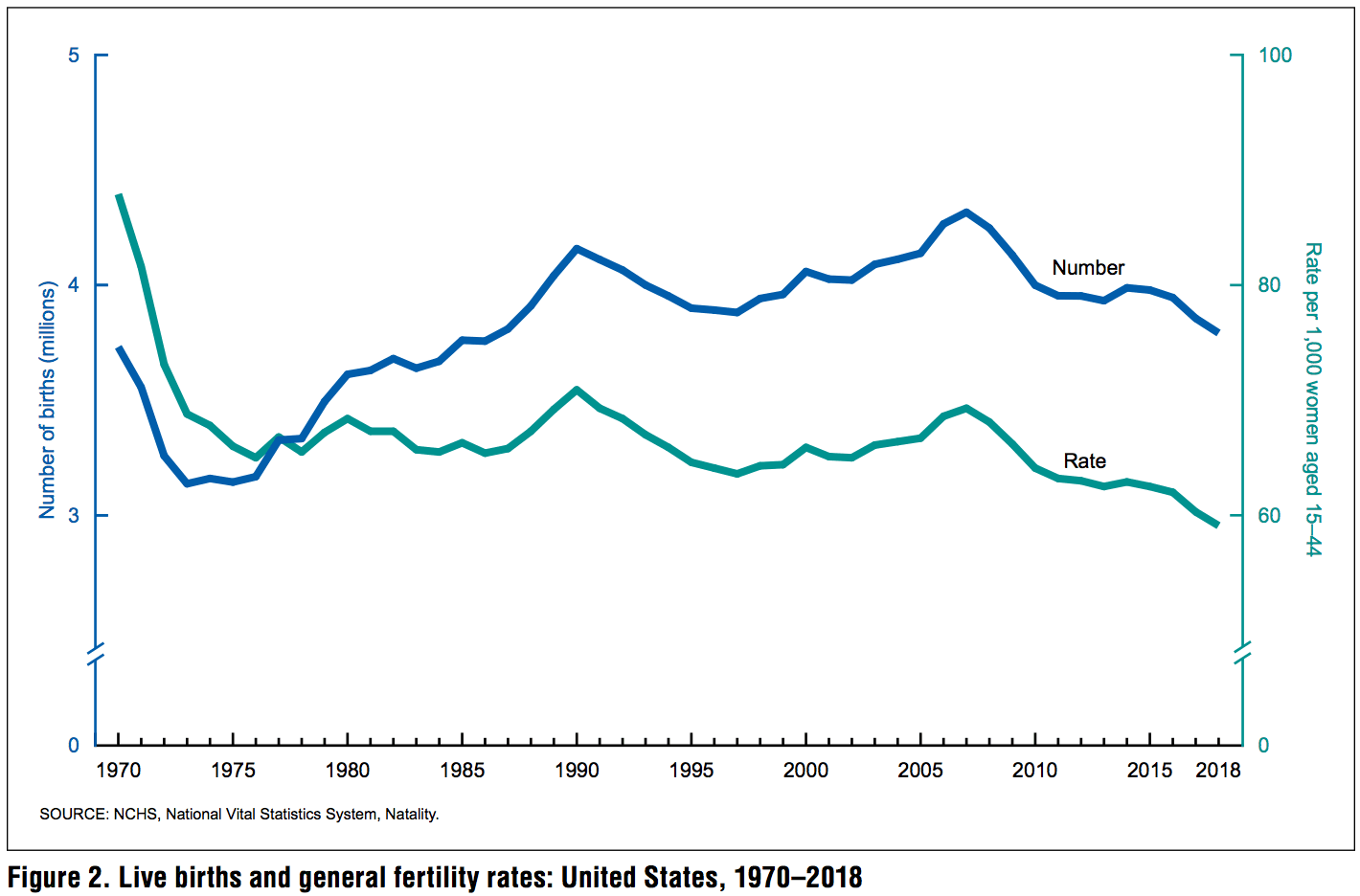U.S. Birth Rate Drops for Fourth Year, Remains Below Replacement Level
The United States’ birth rate has continued to decline for the fourth consecutive year, newly released federal data reveals.
The Center for Disease Control and Prevention (CDC) published the finalized birth and fertility rates for 2018, finding that U.S. birth rates have been dropping since 2015. Last year, less than 3.8 million babies were born in the U.S. — a drop of two percent, or almost 64,000 births, since 2017.
“This is the fourth year that the number of births has declined following an increase in 2014,” the CDC report details. “Before that year, the number of births declined steadily from 2007 through 2013.”
Across major racial groups, the birth rate continued to drop. For example, in a year-to-year comparison for 2017 to 2018, the number of births for non-Hispanic whites declined by two percent. For Hispanics and non-Hispanic blacks, the number of births declined by one percent, as well as a three percent decline in births for non-Hispanic Asians.
The total fertility rate, which stands at 1,729.5 births per 1,000 women, remains below replacement level — the number of births needed to at least replace a generation of Americans. Every year, there must be at least 2,100 births per 1,000 women to be considered at or above replacement level.
Since 1971, the birth rate has been below replacement level, according to the CDC. Birth rates across all major racial groups — non-Hispanic whites, Hispanics, non-Hispanic blacks, and non-Hispanic Asians — were again below replacement level for 2018.
Political consultant Ryan Girdusky noted in his newsletter this week:
Since 2016, non-Hispanic white births have fallen by about 100,000, blacks by 6,600, Asians by 13,700, and Hispanics by 22,200 annually. Every racial group currently has a fertility rate under replacement levels. The only state to have a fertility rate above replacement levels is in South Dakota, with North Dakota, Nebraska, and Utah slightly behind.
Girdusky said the U.S. could see an increase in the birth rate for the first time in years.
“The good news is that [the second quarter] of 2019 was the first quarter in several years where the fertility rate rose,” Girdusky wrote.
Despite a declining birth rate below replacement level, Republican and Democrat lawmakers have yet to lay out a national agenda to increase American births, fertility, and family rates.
Oppositely, Hungary’s Prime Minister Viktor Orbán has implemented a pro-family agenda to increase his nation’s birth rate among similar rapid decline, as Breitbart News has reported. As part of that agenda, the government of Hungary gives a loan of $33,000 to eligible Hungarian couples after they marry. That loan is fully forgiven by the government so long as the couple has three children.
“What we need is not numbers, but Hungarian children: we’re not seeking to sustain an economic system, but Hungary, the Hungarian nation and Hungarian history; we want to encourage the continuation of our families for several generations,” a government spokesperson said in June.
John Binder is a reporter for Breitbart News. Follow him on Twitter at @JxhnBinder.






Comments are closed.